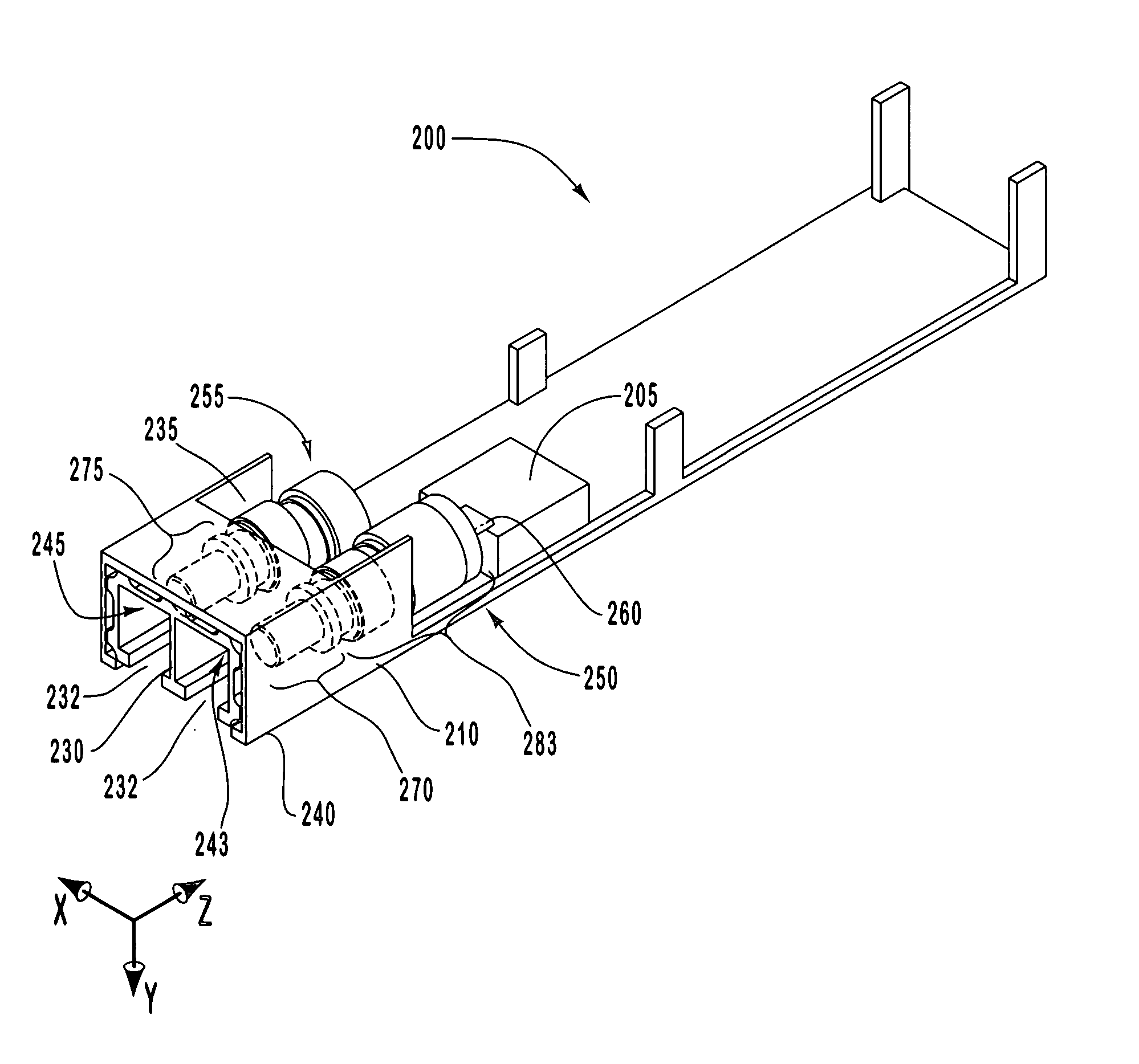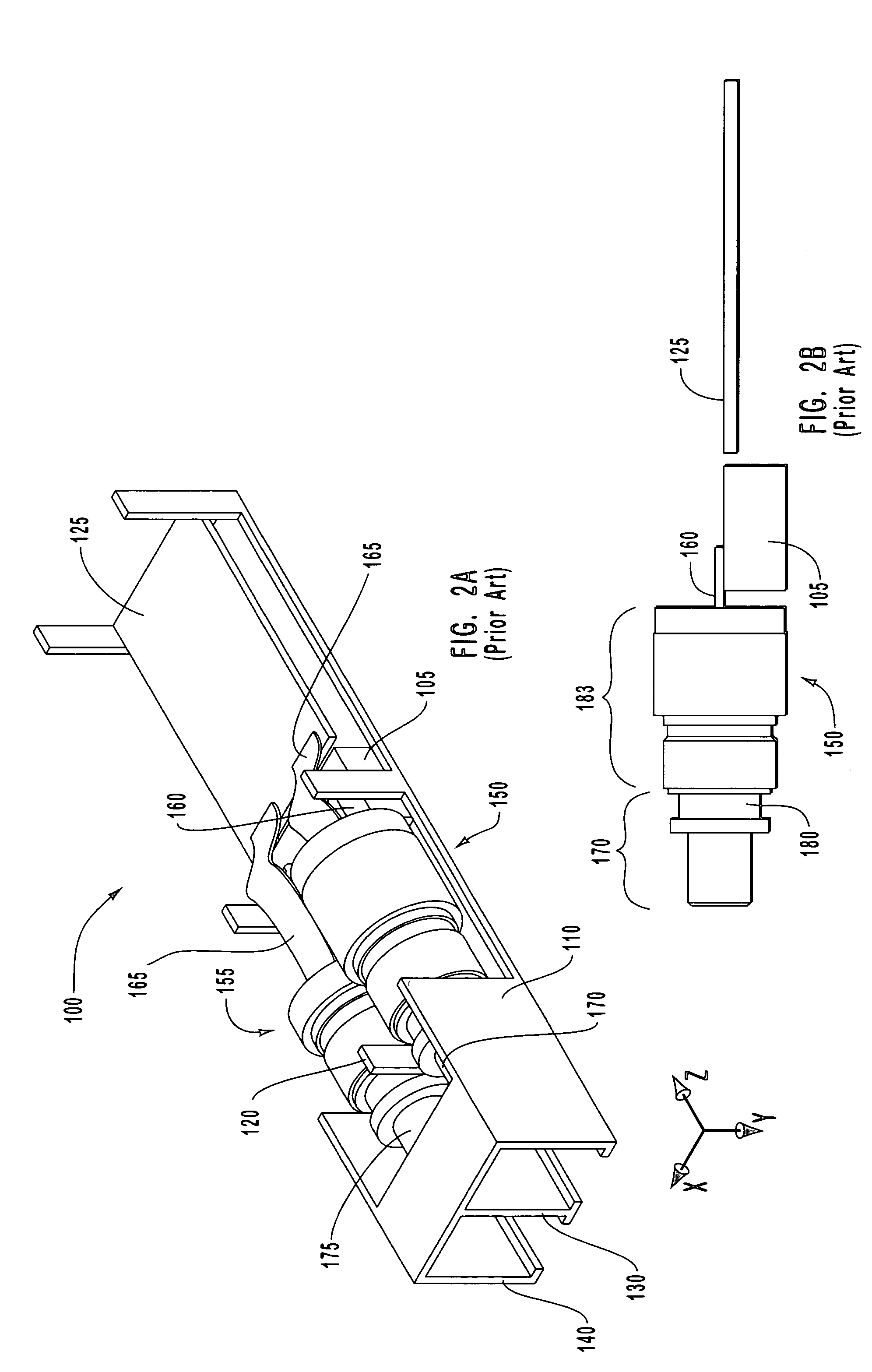Optical transceiver with variably positioned insert
a technology of optical transceivers and inserts, applied in the field of optical transceivers with variably positioned inserts, can solve the problems of poor heat dissipation, poor thermal conductivity, and insufficient tosa heat dissipation, and achieve the effect of efficient thermal conductivity
- Summary
- Abstract
- Description
- Claims
- Application Information
AI Technical Summary
Benefits of technology
Problems solved by technology
Method used
Image
Examples
Embodiment Construction
[0029] The present invention extends to an optical transceiver package that allows for efficient thermal conductivity, as well as acceptable OSA alignment within the optical transceiver receptacles. In particular, an optical transceiver in accordance with the present invention holds the TOSA and ROSA front ends in an appropriate position for an optical fiber connector, and also allows the TOSA to be secured to a rigid heat dissipating element.
[0030] For example, FIG. 3A illustrates an implementation of the present invention in which an optical transceiver 200 comprises a duplex OSA insert 235 positioned within a transceiver housing 210. In general, the OSA insert 235 can be formed from any number of materials, including metal, metal alloys, plastic, and or ceramic materials. In one implementation, for example, the OSA insert 235 comprises a plastic material, which is configured with several mils of tolerance in any X or Y orientation inside optical transceiver housing 210. The OSA ...
PUM
 Login to View More
Login to View More Abstract
Description
Claims
Application Information
 Login to View More
Login to View More - R&D
- Intellectual Property
- Life Sciences
- Materials
- Tech Scout
- Unparalleled Data Quality
- Higher Quality Content
- 60% Fewer Hallucinations
Browse by: Latest US Patents, China's latest patents, Technical Efficacy Thesaurus, Application Domain, Technology Topic, Popular Technical Reports.
© 2025 PatSnap. All rights reserved.Legal|Privacy policy|Modern Slavery Act Transparency Statement|Sitemap|About US| Contact US: help@patsnap.com



